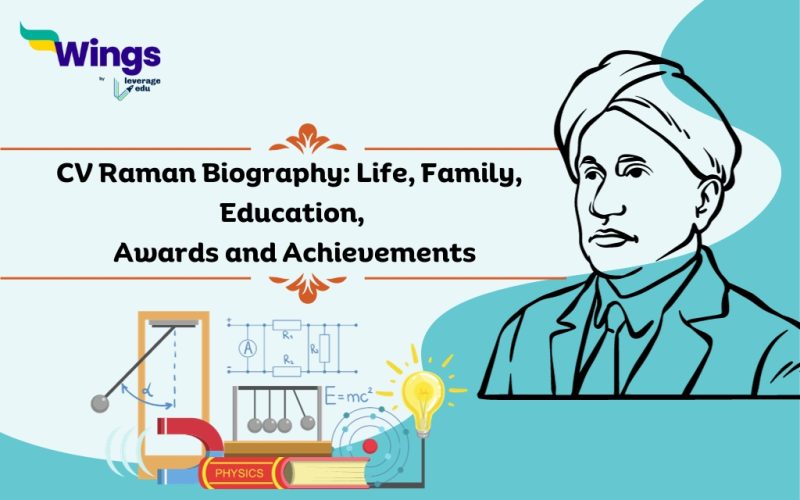Sir Chandrashekhar Venkata Raman (CV Raman) was born on 7 November 1888 in Tiruchirappalli, India. He made tremendous contributions in the field of physics for which he was awarded the Nobel Prize. CV Raman’s father was a lecturer of mathematics and physics. Hence, watching him get involved in science, Raman also developed an interest in the field of physics. He acquired his higher education in Physics from the Presidency College, Chennai in 1904. CV Raman is famous for his discovery of the scattering of light which is popularly known as Raman’s Effect. Stay tuned and read this article to know more about CV Raman Biography!
Also Read: Importance of Technology in Education
CV Raman Biography
Dr CV Raman was an intelligent scientist who was born on 7 November 1888. He was involved in academics from his childhood. His father, Chandrasekhara Ramanathan Iyer was a lecturer and his mother was a homemaker. They both supported him in his higher education.
In 1907, Raman married Lokasundari Ammal. He had two sons who were also great at studies. CV Raman once said that his wife was his greatest critic and supporter, whereas his children were the source of inspiration. He became a teacher and dedicated his life to teaching and mentoring young scientists at the Indian Institute of Science where is served as a Director from 1933 to 1948.
CV Raman Education
CV Raman acquired his higher education from the Presidency College, Madrad in 1902 and obtained his bachelor’s degree in physics (BA) in 1904. He secured first place and won the gold medal in physics. Post graduation he completed an MA degree in physics in 1907 with the highest distinctions. CV Raman has researched in the field of optics and acoustics and gave the most popular discoveries i.e. scattering of light.
In 1907, he joined the Indian Finance Department and while working he took out time to conduct experimental research in the labs of the Indian Association for the Cultivation of Science at Calcutta.
In 1917, he earned the Palit Chair of Physics at Calcutta University. He also served as a Professor at the Indian Institute of Science in Bangalore (1933-1948) and then, he became the director of the Indian Institute of Science.
Also Read: MSc Physics
Also Read: How to Prepare for UPSC in 6 Months?
Awards and Achievements
CV Raman’s great contributions in the field of science and technology have inspired many young scientists. He also became the first Indian physicist to win the Nobel Prize. Some of his awards and achievements are listed below:
- Nobel Prize in Physics (1930)
- Bharat Ratna (1954)
- Lenin Peace Prize (1957)
- Hughes Medal of the Royal Society (1930)
- Matteucci Medal (1928)
- Franklin Medal (1941)
- Knight Bachelor (1930)
- Fellow of the Royal Society (1924)
- Woodburn Research Medal (1913)
- Curzon Research Award (1912)
Also Read: Why Sky is Blue in Colour?
Relevant Blogs
| National Education Day | National Science Day |
| Branches of Physics | CV Raman Education |
| World Science Day for Peace and Development | Indian Scientists Who Changed The World |
FAQs
CV Raman was an Indian physicist born at Tiruchirappalli on 7 November 1888. His father was a lecturer of mathematics and physics so his efforts inspired him to get into the science stream. He was the discoverer of the scattering of light.
Sir Chandrasekhara Venkata Raman was the first Indian to win a Nobel Prize in Physics in 1930 for his famous work on the scattering of light also referred to as the Raman effect.
CV Raman got married to Lokasundari Ammal.
For more information on such interesting topics, visit our Important Days website and follow Leverage Edu.
 One app for all your study abroad needs
One app for all your study abroad needs













